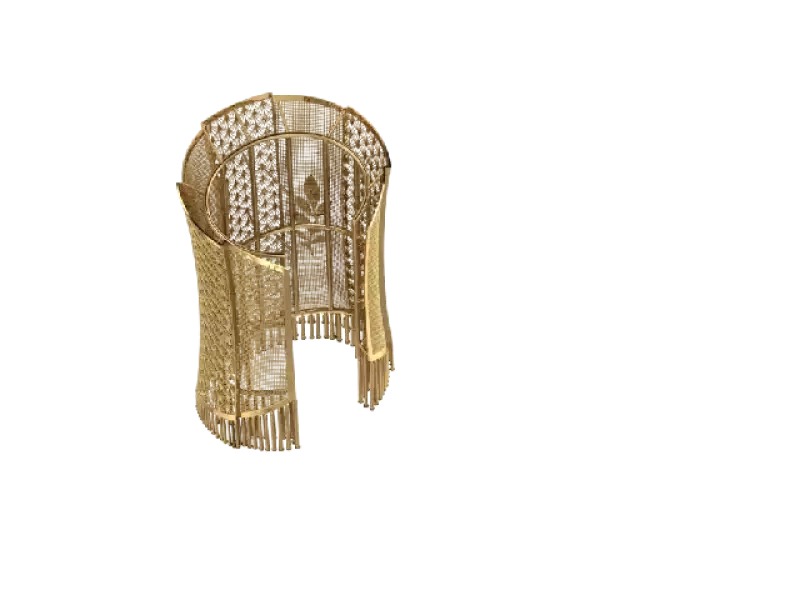Guide for Printing 50mm, 100mm & 200mm Glass Bangles in Middle East
In the modern era of jewelry manufacturing, especially in the Middle East where Saudi Arabia and the United Arab Emirates are the main focal markets, high-production factories cannot rely just on a small number of designs. The jewelry market is always changing, therefore the challenge is to create designs that are both in high demand and difficult to produce. Glass bracelets with filigree bases fall into this category; particularly, those measuring 50, 100, and 200 millimeters in height.
MIDDLE EASTERN JEWELLERY PRODUCTION: CHANGING PATTERNS
The jewelry industry has fully accepted 3D printing as an essential part of the production process. Still, there's a fundamental question: which 3D printers can satisfy the needs of a high-production industry while maintaining the essential precision and speed? It is imperative to understand that operator skill is just as important to success as the 3D printer itself. It's simple to understand the goal: generate more in less time. Because labor and money may be saved by reducing time, choosing a 3D printer with efficiency in mind is crucial.
THE SIGNIFICANCE OF PRECISION IN MIDDLE EASTERN JEWELRY MANUFACTURING
The exact weights of jewelry pieces are highly valued in the Middle Eastern market. It is more important to guarantee constant weights throughout the manufacturing process than it is to just print a piece of jewelry.
• Maintaining Uniform Weights
Any design that does not meet the desired weight targets will be rejected right away. As a result, it is anticipated that a 3D printer will be able to produce more quickly while also exhibiting outstanding finish quality and weight accuracy.
• DLP Technology: Middle Eastern Challenges' Ultimate Solution
All of these factors affect how much post-processing is necessary for the cast item. The more complete a solution the 3D printer can provide, the more these requirements are satisfied. In this case, the DLP technology clearly stands out as the greatest 3D printing technique.
OPTIMISING 3D PRINTING AND CASTING FOR DESIGN SUPPORT
1. The Crucial Role of Designers in the Process
Let's talk about the people who operate the equipment first. The majority of real-world situations involve designers or teams of designers handling the design, support, and administration of 3D printers. Notably, if the team can handle the spruing and support components of the process well, a significant amount of labor and time can be saved.
2. The Filigree Designs Support Structure in the Jacket Style
The jacket-style support structure is one of the best ways to provide support when 3D printing Glass Bangles. This method acts as sprues during the printing process while still maintaining the integrity of the delicate filigree motifs. Because Filigree bangles can have a gauge as thin as 0.2mm, it becomes difficult for the pattern to hold its shape while printing without sufficient support.
3. Reconciling 3D Printing Speed and Accuracy
Slow printing speeds are a trade-off for slow-curing 3D printers, which leads to lower yields and higher time and financial expenses. On the other hand, accurate printing is a strong suit for rapid printing devices such as the Protospeed Rapid or ProtoX.
4. High-Speed Printers for the Production of Glass Bangles with Efficiency
With a 50μm layer thickness and a 200mm height bangle in less than 5 hours, these high-speed printers guarantee efficiency and accuracy in the manufacturing process.
See the instructions below to find out how to install supports to the Glass Bangles. To examine and print the design independently, you may also download it with support.
OBSTACLES IN 3D PRINTING GLASS BANGLES AND SOLUTIONS TO PRESERVE STRUCTURAL INTEGRITY
Deformity
Challenge: During printing, delicate filigree motifs on glass bangles may become deformed.
Solution: To stabilize complex designs while printing, carefully choose the right support structures.
Stable Weight and Finish
Challenge: It can be challenging to make sure every bangle satisfies the precise weight and quality standards.
Solution: Adjust printer parameters to ensure weight accuracy and little variance in a high-quality surface finish.
Reducing Post-Processing Duration
Problem: Prolonged post-processing might raise the price and duration of production.
Solution: Using high-precision printers that minimize errors during the initial printing phase is one way to avoid the need for substantial finishing work. Another is to use advanced post-processing techniques.
Improving Printer's Performance
Challenge: It cannot be easy to balance precision and speed, which might result in lower-quality prints or longer production times.
Solution: Modify printer settings to achieve the best possible balance between accuracy and speed, allowing for productive output without compromising quality.
Manufacturers can achieve the demands of the jewelry industry by producing long-lasting, high-quality glass bangles by tackling these issues strategically.
THE PROSPECTS OF 3D PRINTING IN THE JEWELLERY MANUFACTURING INDUSTRY OF THE MIDDLE EAST
The future of 3D printing in the Middle Eastern jewelry industry appears promising as technology continues to advance. The creation of jewelry could be revolutionized by the incorporation of advanced design tools, the use of multi-material printers, and advancements in 3D printing.
These advancements will facilitate even more customization, quicker production times, and the production of intricate designs that were previously unattainable. Middle Eastern jewelry manufacturers will need to stay ahead of the curve to maintain a competitive advantage in the ever-evolving jewelry industry.

